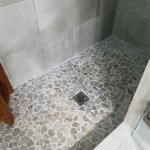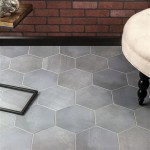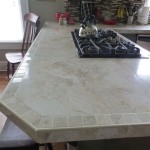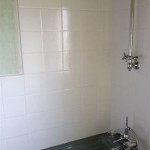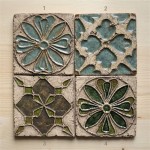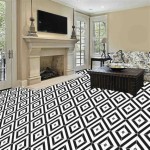Transitioning From Laminate to Tile in Bathroom Walls Without Stripes
Bathrooms are often a focal point in any home and often feature a mixture of materials. This is especially true when it comes to walls, where laminate might cover the lower portion while tile graces the upper region. While transitioning between laminate and tile is a common design choice, it often involves the use of a transition strip to create a clean and defined boundary. However, achieving a seamless and visually appealing transition without relying on a strip can be accomplished with careful planning and execution. This article will explore strategies for seamlessly transitioning from laminate to tile on bathroom walls, eliminating the need for transition strips and enhancing the overall aesthetic appeal.
1. Choosing the Right Laminate and Tile
The foundation for a visually appealing transition begins with the careful selection of materials. When choosing laminate and tile, consider the following factors: *
Color Matching:
The color of the laminate and tile doesn't have to be identical, but a cohesive color scheme is essential. Opting for colors that complement each other can create a harmonious transition. *Texture and Finish:
Smooth, matte laminate and tile will blend seamlessly, while textured surfaces may draw attention to the transition line. *Pattern and Size:
If your laminate has a pattern, consider using a tile that either coordinates with the pattern or has a simpler design to avoid visual clashes. *Thickness:
Ensure the thickness of the laminate and tile are similar to avoid noticeable differences in the transition area.By selecting materials that complement each other in color, texture, pattern, and thickness, the transition between laminate and tile will appear more natural and less pronounced.
2. Utilizing a Trim Board for Support and Concealment
A decorative molding, like trim boards or chair rails, can serve as a functional and aesthetically pleasing solution for bridging the gap between laminate and tile. This approach offers several advantages: *
Supporting Tile:
The trim acts as a horizontal support for the tile, offering a solid foundation and preventing potential cracks or chips at the transition point. *Concealing Imperfections:
The trim can cover any slight inconsistencies in the placement of the laminate and tile, creating a clean and uniform appearance. *Emphasis on Design:
The trim board adds a decorative element to the transition, offering a subtle visual break and enhancing the aesthetic appeal of the bathroom.By strategically placing a trim board, you can subtly define the transition area without the need for a separate transition strip. The trim board should be the same width as the tile grout joints, allowing for a smooth transition and a streamlined aesthetic.
3. Precision Installation and Careful Grouting
Achieving a seamless transition requires meticulous installation and careful grouting. *
Precise Installation:
It is critical to ensure that the tile and laminate are aligned perfectly at the transition point. This requires precise measurements and careful consideration of grout lines. *Consistent Grout Lines:
Using equal-sized grout lines for the laminate and tile will enhance the visual continuity of the transition. If the grout lines are different sizes, the transition will be more noticeable. *Color Matching Grout:
Selecting a grout color that blends with the laminate or tile will further minimize the visual impact of the transition line.By focusing on precision during installation and grouting, you can create a transition that appears almost invisible and preserves the visual integrity of the bathroom's design.
4. Choosing Complementary Colors for a Soft Transition
If a trim board is not desired, another option is to use a color scheme that minimizes the visual impact of the transition. Consider using laminate and tile colors that are similar in tone or have a subtle color gradient. *
Subtle Color Gradients:
This approach involves selecting laminate and tile that have a gradual color change, creating a smooth and continuous visual flow. *Complementary Colors:
Choosing colors that complement each other, like blue and green or beige and brown, can create a harmonious transition without a stark difference in color.Employing a color scheme that promotes continuity and visual harmony can effectively minimize the visual impact of the transition line.
5. Seamless Transition Using a Thinset Mortar
For a truly seamless appearance, consider using a thinset mortar to directly adhere tile to the laminate. This method involves a precise application of thinset and careful alignment of the tile to ensure a strong bond and a level surface. This approach creates a seamless transition with no visible break or gap between the laminate and tile, eliminating the need for transition strips or trim boards.
However, this method necessitates specialized knowledge and skills, and it's crucial to consult with a professional tile installer or contractor to assess the feasibility and ensure proper execution.
Transitioning from laminate to tile on bathroom walls without relying on strips requires thoughtful design and careful execution. By selecting compatible materials, utilizing a trim board for support and concealment, ensuring precise installation and grouting, choosing complementary colors, and considering thinset mortar for a seamless transition, you can create a visually appealing and functional bathroom that complements the overall aesthetic of your home.

How To Transition From Tile Wood Flooring

110 Stylish And Cool Floor Transition Ideas Digsdigs

How Can I Create An Invisible Transition Between Diffe Flooring Types

110 Stylish And Cool Floor Transition Ideas Digsdigs

How To Install Groutable Vinyl Tile

Tile And Carpet To Laminate Transition Bunnings Work Community

Floor Transition Strips City

How To Install Vinyl Plank Flooring In A Bathroom Fixthisbuildthat

Install Vinyl Plank From A Hallway Into Room No Transition Strip

How To Tile Over Existing Brepurposed
Related Posts

